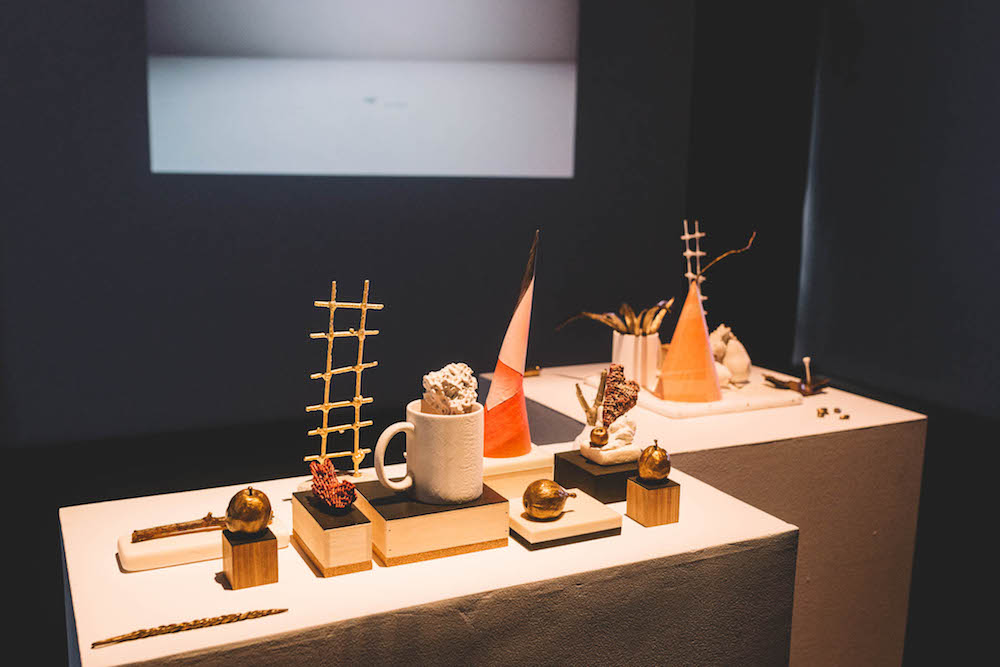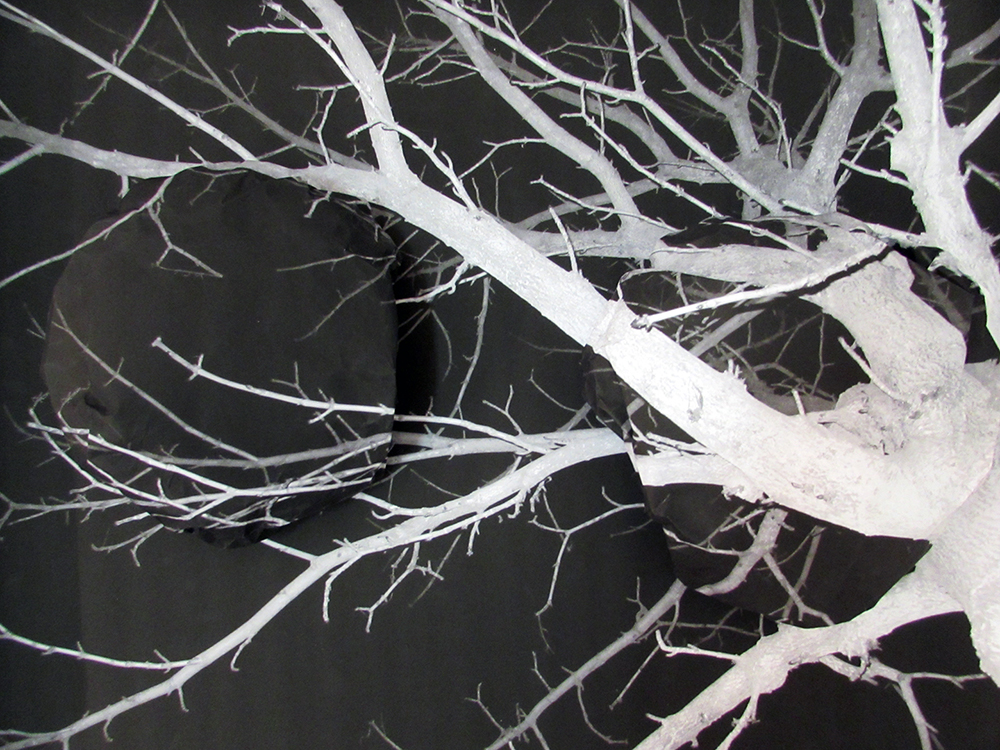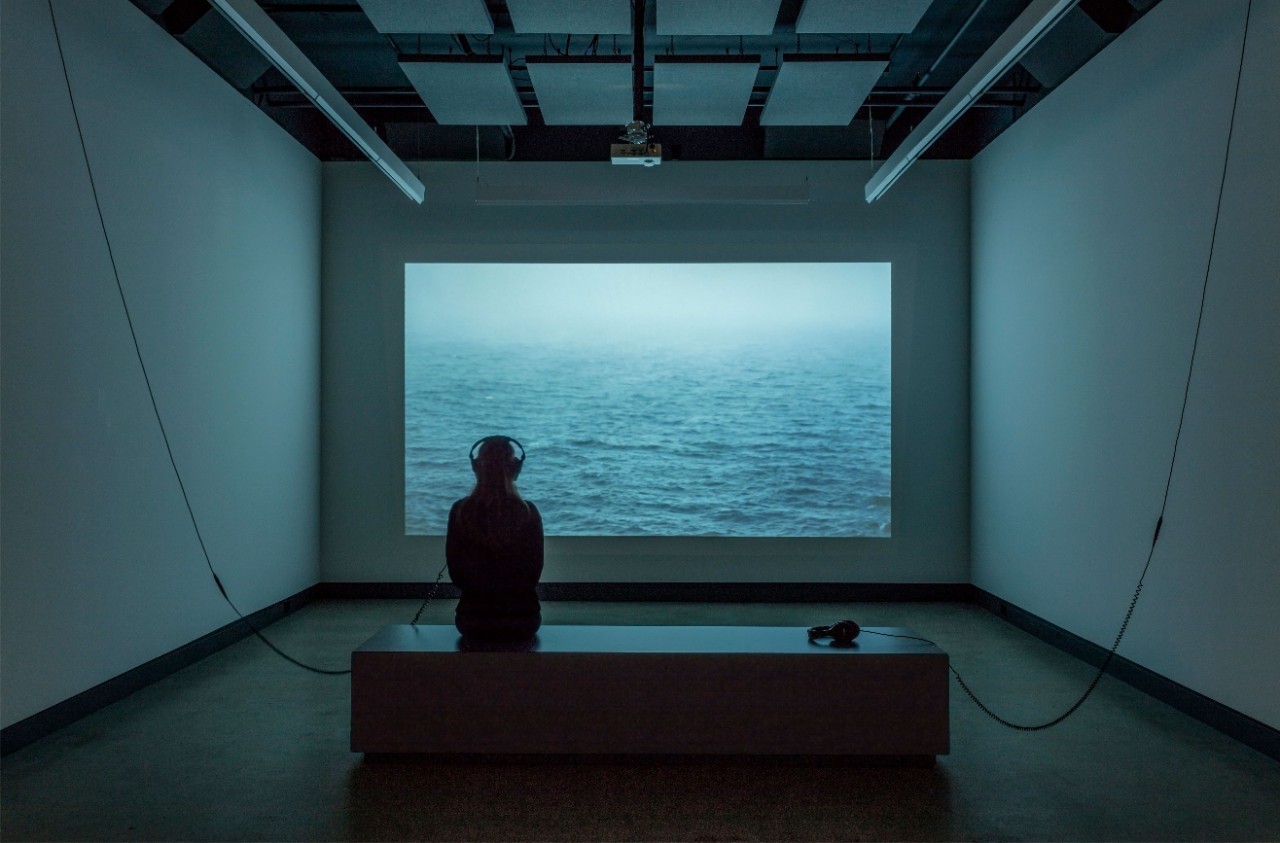From sonar use in Chile to the tradition of flags, the FOFA Gallery displays work of alumni artists
The three latest additions to Concordia’s FOFA Gallery incorporate various mediums and themes, yet all showcase the talent of Concordia alumni.
Among these works are Jerry Ropson’s the distance between outstretched arms (deadflag), Digital Erratics by Elisabeth and Tim Belliveau, and Sandra Volny’s Where does sound go, where does it come from.
The Belliveau siblings use a mixture of sculpture and video installations in their joint work, Digital Erratics. Tim recently completed his master’s at the university—this installation is part of his thesis. Elisabeth also attended Concordia where she completed her master of fine arts.
In the FOFA Gallery, the Belliveaus have displayed their respective pieces together. The common theme of exploration within the mediums of sculpture and moving images ties the vast installation’s components together. Digital Erratics includes sculptures from different materials, including glass, wood, ceramic and paper, among others. Video projections manipulate and experiment with moving images, stop-motion animation as well as the properties and aspects of colour. Digital Erratics thoroughly explores and experiments with its mediums, in traditional and contemporary ways, providing viewers with plenty to discover and consider.

Jerry Ropson’s the distance between outstretched arms (deadflag) is displayed in the York Corridor Vitrine of FOFA. The site-specific work is eye-catching, detailed and provides a new take on traditional viewing of art—the work is within the gallery, but only viewable outside of the space. When installing the piece, Ropson worked in the public space for several days, interacting with the audience and environment around him, further challenging the traditional forms of displaying art.
This installation focuses on the form of the flag, as a structure and material—a concept Ropson has focused on periodically since 2002. This piece also explores the conceptual and historical meanings behind the motif, including connections to both colonialism and concepts of nationality. “The meaning or specific connotations and uses of the flag have changed and morphed continually over the years,” Ropson said. “With origins deep-rooted in nautical history, warfare and land claiming, flags stand as just one more uneasy signifier of colonial history. The idea of the iconoclastic use of the flag is an important distinction.”
For Ropson, exhibiting in the FOFA Gallery was especially significant because this is his first exhibition in Montreal since leaving the city in 2009. This exhibit was also special for Ropson, as he and Elisabeth Belliveau worked on and completed their respective MFAs in fibres at Concordia at the same time, and previously exhibited at FOFA together in 2007. “It was so great to return to Montreal and see so many familiar faces at the vernissage, but also during the installation of the work,” Ropson said.
A variety of materials and mediums, including twine, ink, fabrics, vinyl and sculptural elements, were used in this project. The choice of materials and the placement of the individual pieces were important in this work. “I spent a lot of time considering the layout of the objects, and what went where and why,” Ropson said. “I also make very specific choices in the materials I work with. I utilize everyday materials that suggest the interrelations of social, cultural and economic structures.” His installation, the distance between outstretched arms (deadflag), also explores the flag’s ability to signify place and assert ideologies in a relatively conceptual way. There are a lot of complexities attached to such a simple material form, which Ropson aims to deconstruct in this piece.

Sandra Volny’s Where does sound go, where does it come from consists of a video installation accompanied by audio. The work focuses primarily on the subject of Chilean fishermen and their relationship to sound in the form of sonar. Volny, a Concordia MFA graduate, recently spent time in Chile with her art collective, Triangular Project, traveling the diverse landscape of the country and looking at the relationships different communities have with surrounding spaces.
Volny participated in a month-long residency while in Chile, and it was there that the majority of this art piece was formed. Volny had specific interest in sonar, and she looked at how it is used in the sea, both by animals and humans, in her artistic practice. The fishermen Volny centred the work around use traditional knowledge passed down through generations to navigate the sea.
The focus on the sea as a primary subject matter also addresses environmental issues. The piece highlights the contrast between traditional fishing and its more commercial forms, and depicts the ocean as one of the most fragile ecosystems in Chile. Volny’s main message for this piece is one of awareness and being present in one’s environment. “It’s about how you can navigate a space through sound, and about bringing an awareness to what’s around you,” she said.
With the addition of these new exhibitions, the FOFA Gallery connects with the Concordia community to provide diverse and exciting content, and showcases the talent of the school’s artistic community. The three exhibits explore varied and interesting themes, mediums and concepts, assuring the gallery holds something for everyone and provides students with a place to explore new insights, ideas and understandings.
These three exhibitions will be on display until Dec. 8. The FOFA Gallery is open from 11 a.m. to 6 p.m., Monday to Friday. Admission is free.
Feature photo: Sandra Volny’s Where does sound go, where does it come from (2016). Photo by Richard-Max Tremblay.




